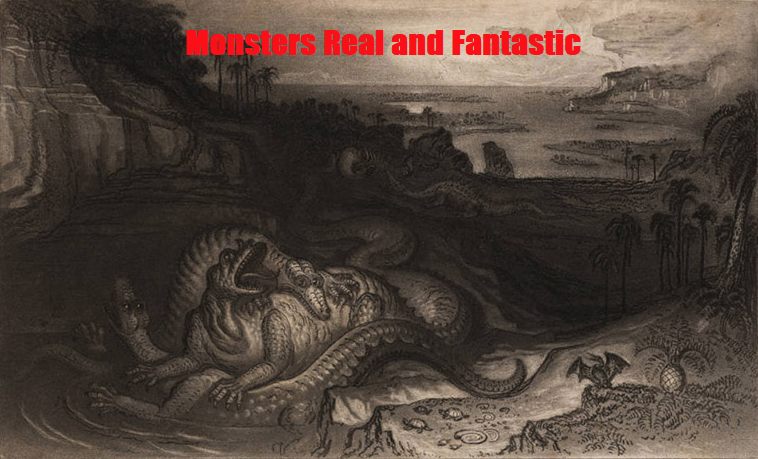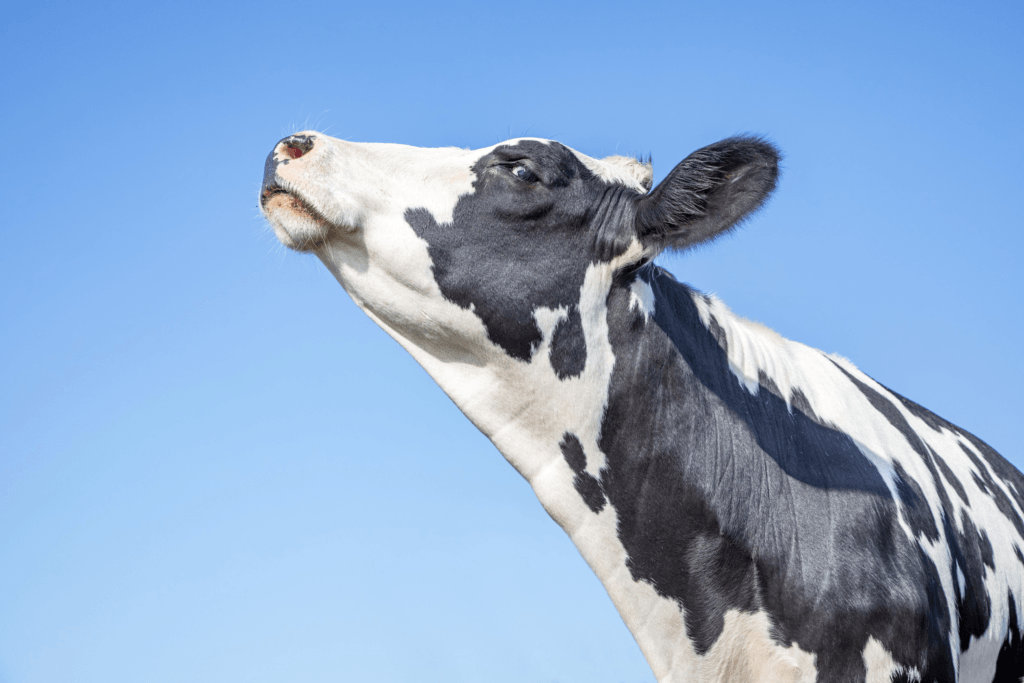
A shifty mammal.
Mammals sometimes get a reputation for being a bit boring. They’re a bunch of hairy blobs too familiar to elicit much excitement. Sure, most people’s favorite animals are mammals, but few consider them particularly exciting or unusual. This is largely a problem of familiarity. Most of the animals we most easily recognize are mammals, including our own species, and so they are considered normal or default. While I have worked to dispel this notion of the dull mammal before, today we’re taking a special path. Mammals have been around nearly as long as the dinosaurs, and have seen thousands of different branches that simply never reached the current day. Today we will be exploring these lost lineages, not just unusual relatives of today’s mammals, but strangers that left no legacy at all.
Mammals first appeared in the middle of the Jurassic, when dinosaurs had already firmly dominated all large land roles. As such, they were limited for their first hundred million years or so to small sizes, no greater than a badger. However, this did not stop them from achieving incredible diversity similar to that seen in rodents and other small mammals today. Chief among the mammals of the Mesozoic were the multituberculates, named for the complex tubercles of their teeth. They were not marsupials, placental mammals, or monotremes (the modern egg-laying mammals) but their own group outside of all of these. They were known for their unusual first lower premolars, which extended into a sort of bladelike edge that was useful for processing a variety of food depending on the species using it.
One of their unusual claims to fame is Litovoi tholocephalus, a rat-sized member of the family restricted to a small island in what is now Romania, which was largely flooded in the Cretaceous. This makes it one of the earliest island-dwelling mammals known to science, and it has a strange adaptation for its home. The skull of Litovoid is not so unusual for your average multitubercate, but it contains a positively tiny braincase. This was likely a result of island life; without as much food to go around, the least essential part of the body atrophied. This is the earliest mammal known to be adapted in such a way to an island habitat.
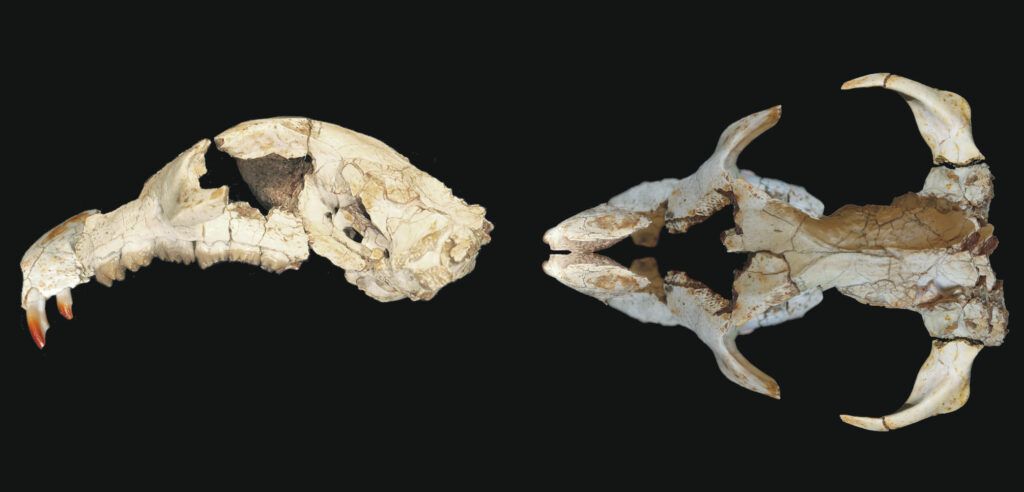
Litovoi‘s skull, showing off the unique dentition of its family.
The multituberculates also produced some of the largest mammals of the Mesozoic. The late Cretaceous produced a lineage of herbivorous multituberculates that could be considered a first draft run of capybaras. Yubaatar zhongyuanensis was an early member of this group, already similar in size to a modern beaver, which was massive for a mammal of the time. How this creature survived the dinosaurs around it is uncertain, but the group as a whole survived the end of the Mesozoic, reaching even greater sizes bordering on 200 pounds, before fading away not long after the Cretaceous ended. The multituberculates in general may have lasted until a mere 20 million years ago, but they were in decline long before then, never reaching the diversity they held in the Mesozoic again.
Eutriconodonta was another populous mammal group that did not outlive the Mesozoic period, named again for their unique tooth arrangement. Most of them had venomous spurs, a feature that now only exists in the platypus but used to be common in mammals. They were again mostly restricted to small sizes, but they were quite diverse. Spinolestes gives us insight into their diversity through its incredible preservation, showing not only its hair, but the outlines of its external ears, something that it wasn’t otherwise certain that mammals of this time even had. Spinolestes showed a diversity of different types of fur, including normal hair, short spikes, and patches of tough scutes. Their spine was incredibly well-built as well, with interlocking vertebrae that provided a powerful support structure, likely allowing them the leverage necessary to pull apart tough vegetation in search of insects. The modern hero shrew, which has a similar spine, can easily support the weight of a full-grown human on their back despite weighing less than a pound themselves. Spinolestes might well have been the strongest mammal of the Mesozoic.

A skeletal of Spinolestes, showing off just how robust its spine and limbs were.
Argentoconodon is another member of the Eutriconodontids, again showing off their diversity by being the earliest known gliding mammal (maybe). The idea that Argentoconodon was a glider is based off of the similarity of what fragmentary remains it has resembling its later relative Volaticotherium, which is 100% known to be a glider, with skin impressions showing a membrane between its limbs and encasing its feet, as well as a flat tail that could act as a rudder. Argentoconodon was also a carnivore, judging by its teeth, possibly hunting small lizards and the like in the trees. According to fringe figure Carlos Albuquerque, Volaticotherium was actually the first flying mammal. While this would be amazing for this article, unfortunately Carlos is a known crank who also sees Velociraptor as a fully-capable flyer. Not just a glider or something (also unlikely), an animal capable of fully powered flight, at least when young. His understanding of what it takes to fly is simply not great. Thankfully, I think that gliding is plenty cool.
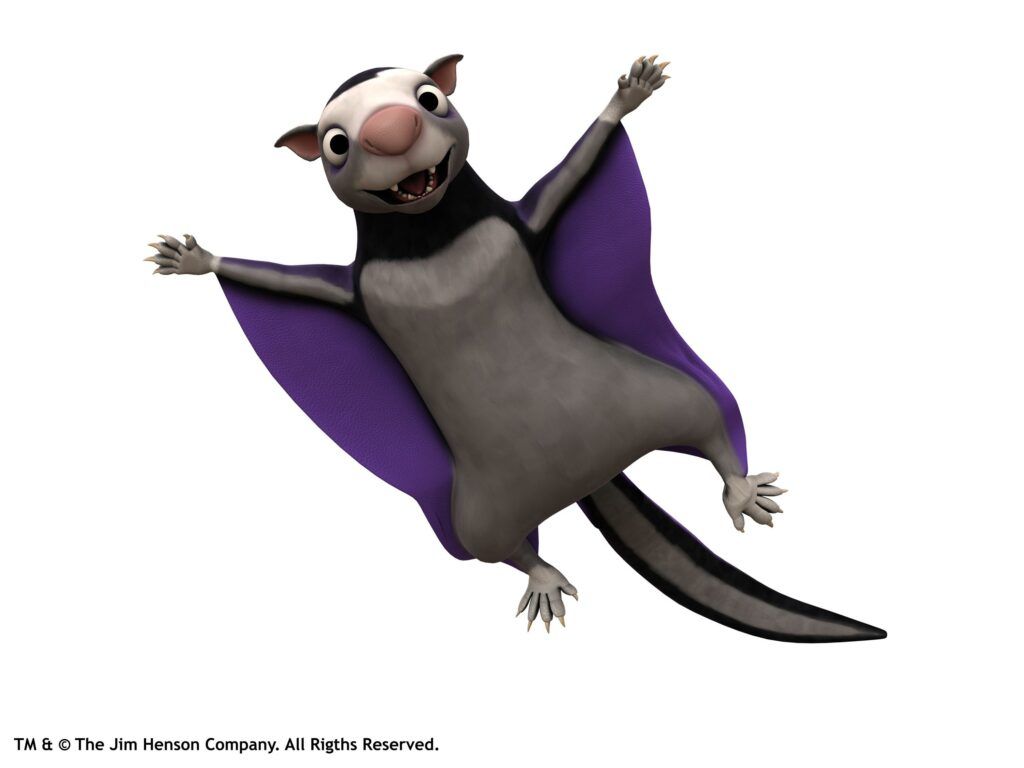
A Volaticotherium named Vlad, featured on the show Dinosaur Train.
Of course, while all of these animals were fascinating, I know what you want is the charismatic megafauna, and for that we have to go beyond the Mesozoic. As long as the dinosaurs dominated all of the large land animal niches, mammals were restricted to small sizes. When these niches opened up, one of the first groups of mammals to reach massive sizes was the pantodonta. The pantodonts seem to have been extremely basal eutherians (our branch of mammals, who give birth to fully developed babies instead of embryos that finish development in a pouch), grown to massive sizes directly from the tiny shrew-like mammals of the dinosaur age. These early Cenozoic cattle were extraordinarily generic-looking blobs of mammal meat, but this is what makes them endearing. There have never been mammals more mammal than the pantodonts.
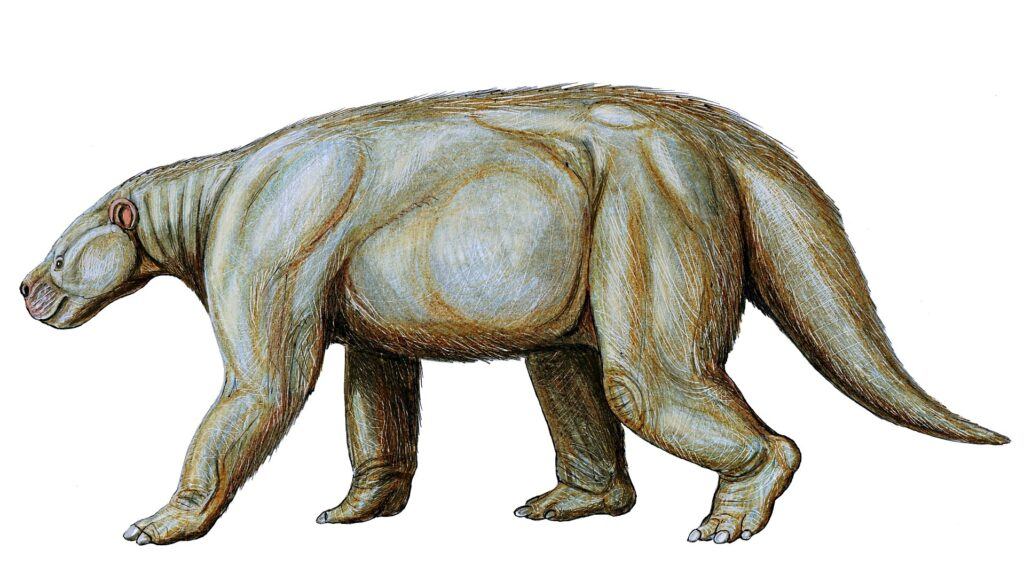
Barylambda faberi by Dmitry Bogdanov. Look at this incredible mammal-flavored slab of mammal.
While the pantodonts filled the roles of large herbivores, the first large mammalian carnivores evolved alongside them. These were the mesonychids, a lineage of hooved mammals closest related to today’s artiodactyls, the group including pigs and deer. As you might expect from their odd lineage, they were not quite like anything alive today. They did not bear their entire weight on their hooves, but instead had them at the end of their toes like claws. Their necks were long and strong and their heads huge, larger in proportion to their bodies than carnivores today. With a stiff-backed loping gait and tall spines on their thoracic vertebrae, their life appearance might have been something between hyena and a bison. The most famous mesonychid for a long time was Andrewsarchus, thought to be the largest mammalian land predator of all time.

Skeletal reconstruction of Pachyaena ossifraga, a rather standard large mesonychid. Note the long spines over the shoulders and massive head.
However, Andrewsarchus turned out to be closer to a different, also-extinct group. While mesonychids were only related to the artiodactyls, the entelodonts were actually among them. Often called “hell pigs” for how they looked like warthogs on stilts, they aren’t usually considered all that close to them. Instead, they group closer to whales and hippos (whales are hooved mammals too, yes). Take the hyena and bison of the larger mesonychids and add a warthog’s facial protuberances and you have your average entelodont.
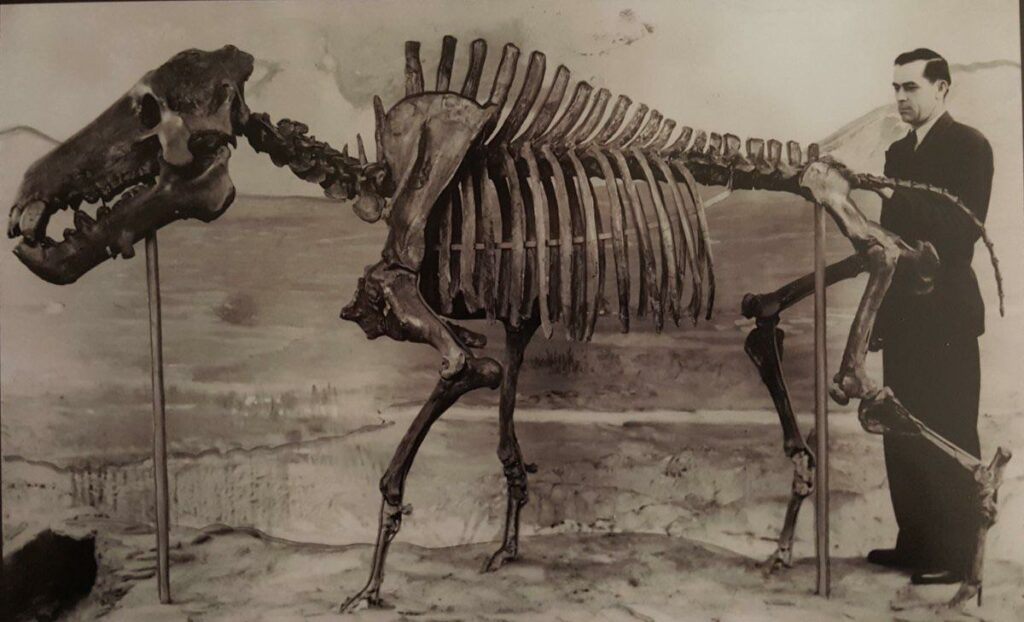
Skeleton of Daeodon shoshonensis, the largest entelodont known to science. Note the relatively long limbs; this thing could move.
Like modern pigs, they probably ate anything they got their teeth on, with their teeth showing wear consistent with an omnivorous diet. Their largest members vastly outbulked every predator in their environment, and with their long legs they could have even hunted for themselves. Entelodonts are also one of the few prehistoric animals to leave clear evidence of their behavior on their bones; multiple skulls have been found with partially-healed tooth marks from others of their kind, suggesting that they regularly bit one another’s faces in some sort of dominance battle or sexual contest, using enough force to leave marks on the bone beneath. The bony nubs on their faces might have been another form of display, or something that could be bitten with relative safety so that the more vital eyes and brain were safe.
Two groups of mammals are grouped together here for how they demonstrate convergent evolution, one of the best features of how life works. Unrelated animals, over and over, come across similar solutions to the same problems. Long before the mammals we called rhinos emerged, two major groups took similar looks, with massive bodies and large horns. They were in fact similar enough that I see people mix them up once in a while, but we will dive into their differences here.
In the era of the pantodonts, the uintatheres emerged as a second family of large herbivores. Closest related to odd-toed mammals, which do actually include modern-day rhinos (and horses and tapirs!), uintatheres had lumpy skulls, marked by horns shaped a lot like a giraffe’s. The exact number and placement of these horns varied, ranging from none in the earliest species to 6 in the massive Eobasileus. These horns are blunted, and likely weren’t any sharper in life, meaning they likely weren’t particularly lethal weapons. Instead, they were likely for shoving or for smashing one another with their skulls. Their brain cases were particularly thick and their brains small, so they certainly could take a hell of a beating to their skulls without much damage. The massive, saber-shaped canines they had were also likely more for show, with their sheer size plenty of defense against most predators of the era. What a perfectly “prehistoric” looking creature!

Eobasileus (left) and Uintatherium (right) by Apokryltaros, an absolute hero who draws lots of lesser-represented prehistoric life for Wikipedia. I love you Apokryltaros, I couldn’t do it without you.
Within the odd-toed mammals and overlapping in time and space with the uintatheres were the brontotheres. Despite looking even more like rhinos than uintatheres, they were on the horse side of the family and if alive today would be their closest relatives. Just like the uintatheres, they got larger and more impressively horned over time, and although they had less horns, they grew bigger than even Eobasileus, and far bigger than any living rhino; a male Megacerops could be taller than 8 feet and weigh more than 3 tons.

Megacerops colaradensis skeleton owned by the National Museum of Natural History. The bone might have been sheathed by horn in life, making the horns even larger.
Rhino horns are made out of keratin, the same material as hair and fingernails. Brontothere horns were instead made of bone like an uintathere’s and arranged side by side. They ranged in size and shape, from Protitanops‘ nose balls to the longer, rounded spikes Megacerops sported. In at least one genus, Embolotherium, instead of two distinct horns there was merely one mass of bone. Too fragile for battering, this heart-shaped horn might have been used for visual signaling or supported a resonating chamber for producing sounds. 30 million years ago, the rhino-horses songs might have rang out across Mongolia’s grasslands.

Reconstruction of Embolotherium andrewsi by Mick Ellison. The horn is portrayed as largely buried in flesh here, which is entirely likely!
Our last group of mammals takes us to previously unexplored territory; the ocean. Mammals took to the sea quickly in the wake of the dinosaurs. The ancestors of the whales were strongly aquatic at least 50 million years ago, the otter-like ancestors of seals swam in lakes 30 million years ago, and otters diverged from the rest of the mustelids at least 8 million years ago. And as seals were still learning to swim, the desmostylians grazed on sea grass.
Desmostylians were utterly bizarre, by far the strangest animals in this article. Their fingers and toes were wide and flattened for swimming, although the density of their bones suggests that many of them walked along the sea floor, “galloping” like hippos. This increase in the density of the spongy interior of their bone also supports this, and is quite rare in animals that make their way onto land. Despite their fully-developed limbs, it seems most desmostylians rarely if ever walked on dry land. Desmostylus itself, the namesake of the group, was significantly lighter-boned and more adapted to swimming, possibly snagging floating plants at the surface while their relatives grazed on the sea floor.
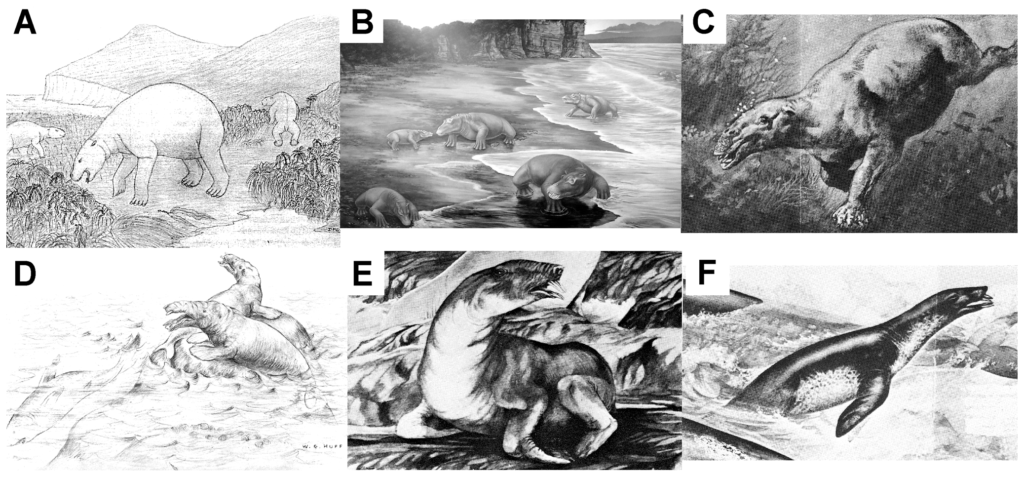
Six wildly different reconstructions of desmostylians based on different interpretations of their lifestyle. C is probably the most accurate, but this gives a good taste of how weird they are! Nobody knew what to make of them for a while!
Like some extinct elephants, both their upper and lower canines formed protruding tusks. Desmostylians are so strange that it isn’t exactly clear just what they are. One researcher suggested they were monotremes, giant marine relatives of the platypus. More commonly, they are thought to be afrotheres, closely related to manatees and elephants, both of which they do seem to resemble. But even more recently it has been suggested they are perissodactyls, the group to which horses, rhinos, the above brontotheres, and the bizarre tapirs belong. This would make them easily the most bizarre and divergent members of the group.
Like modern sea cows (manatees, dugongs) desmostylians seem to have been coastal herbivores, although with a paradox at play. The more active swimmers like Desmostylus were restricted to the most shallow of water, while the floor-walking Paleoparadoxia could have been going as deep as the upper bathyal zone, 150 meters (about 500 feet) to 500 meters (a third of a mile) under the ocean’s surface. What they were doing down there is a mystery, as sunlight cannot pierce so deep to fuel plant growth. Most likely they were in the more shallow end of that estimate, although that is still shockingly deep for such creatures to amble about in the muck.
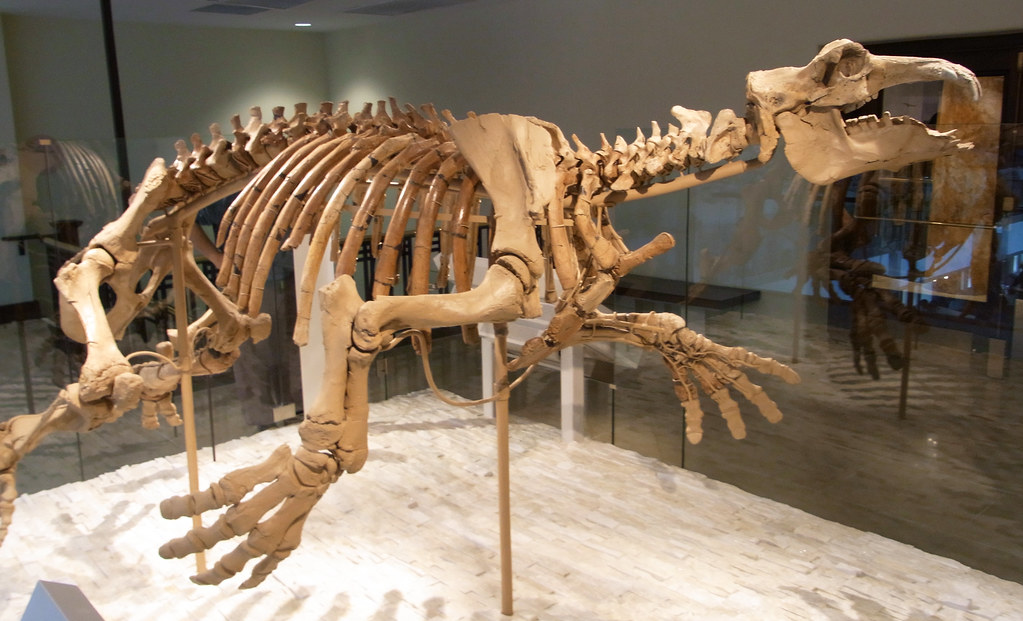
Neoparadoxia cecilialina, showing off how weird these things are.
This is barely a fraction of the strange mammals that have wandered our planet over the last 200 or so million years. There are entire branches I left out, like the calicotheres, the strange hooved mammals of South America, and every forgotten group of marsupials. I also didn’t cover individual oddities like the many strange relatives of modern elephants, or the many lemurs that broke the modern mold of small tree-dwelling dog-monkeys. And that’s ignoring how fascinating I find many modern mammals! I just wanted to provide a taste of just how diverse and strange mammalia can get and has gotten over our long, long time on earth. Don’t take anything for granted, kids! Even the most normal thing you know might have a long, strange history!
